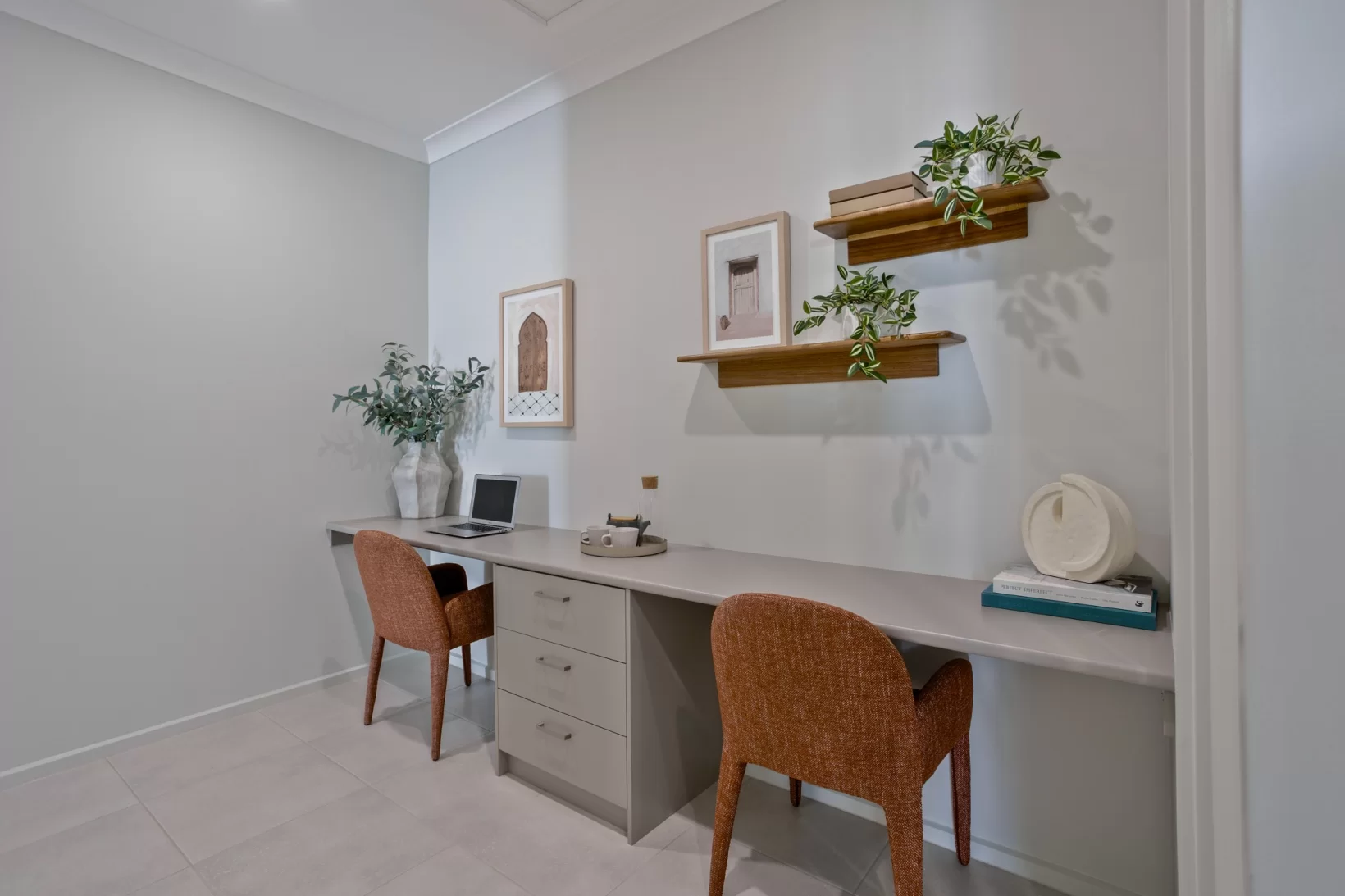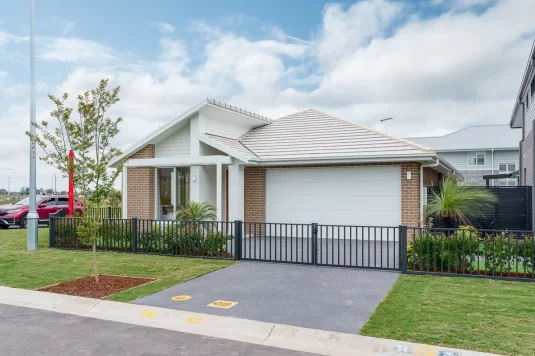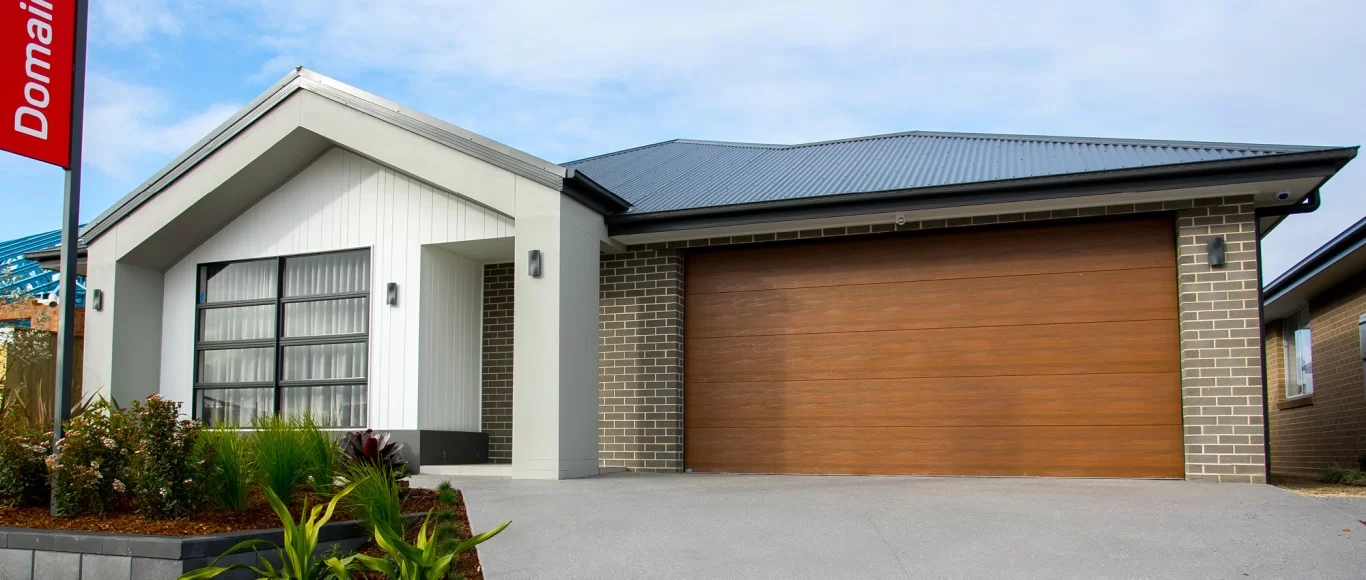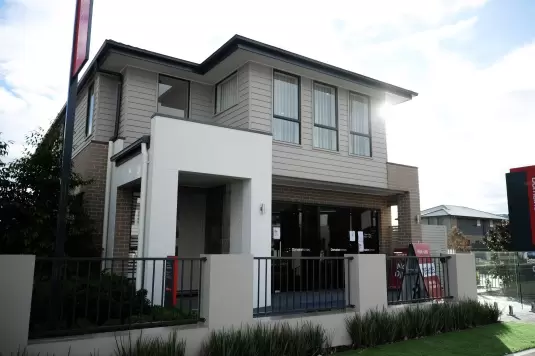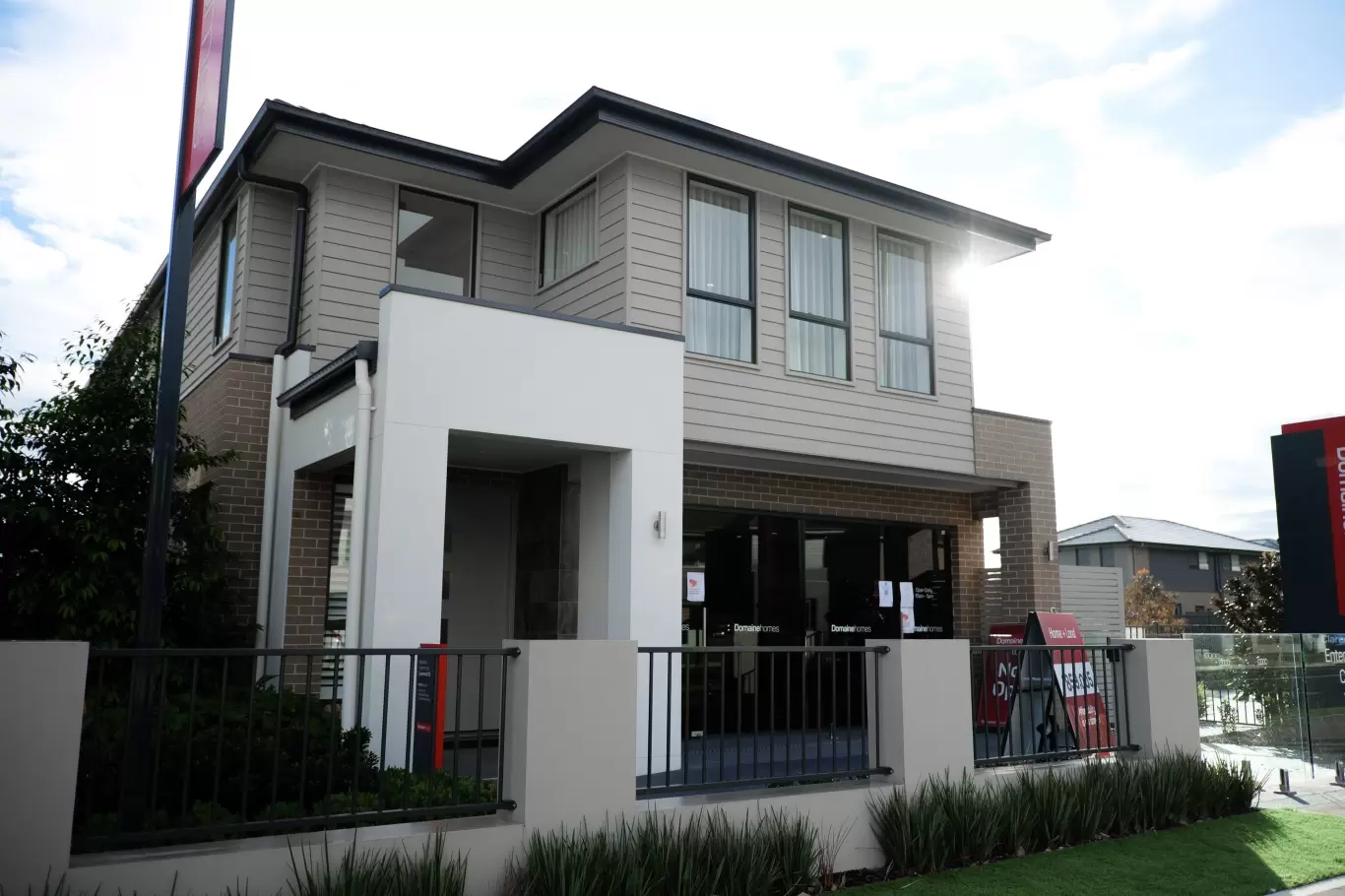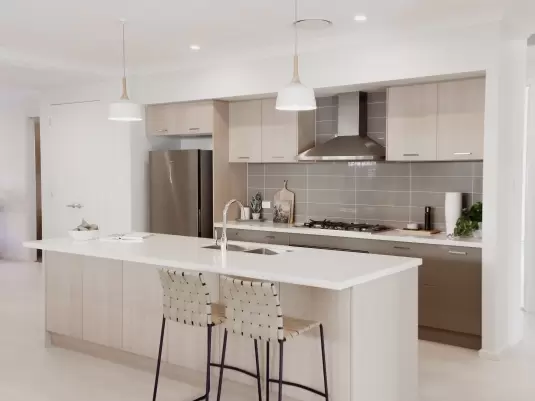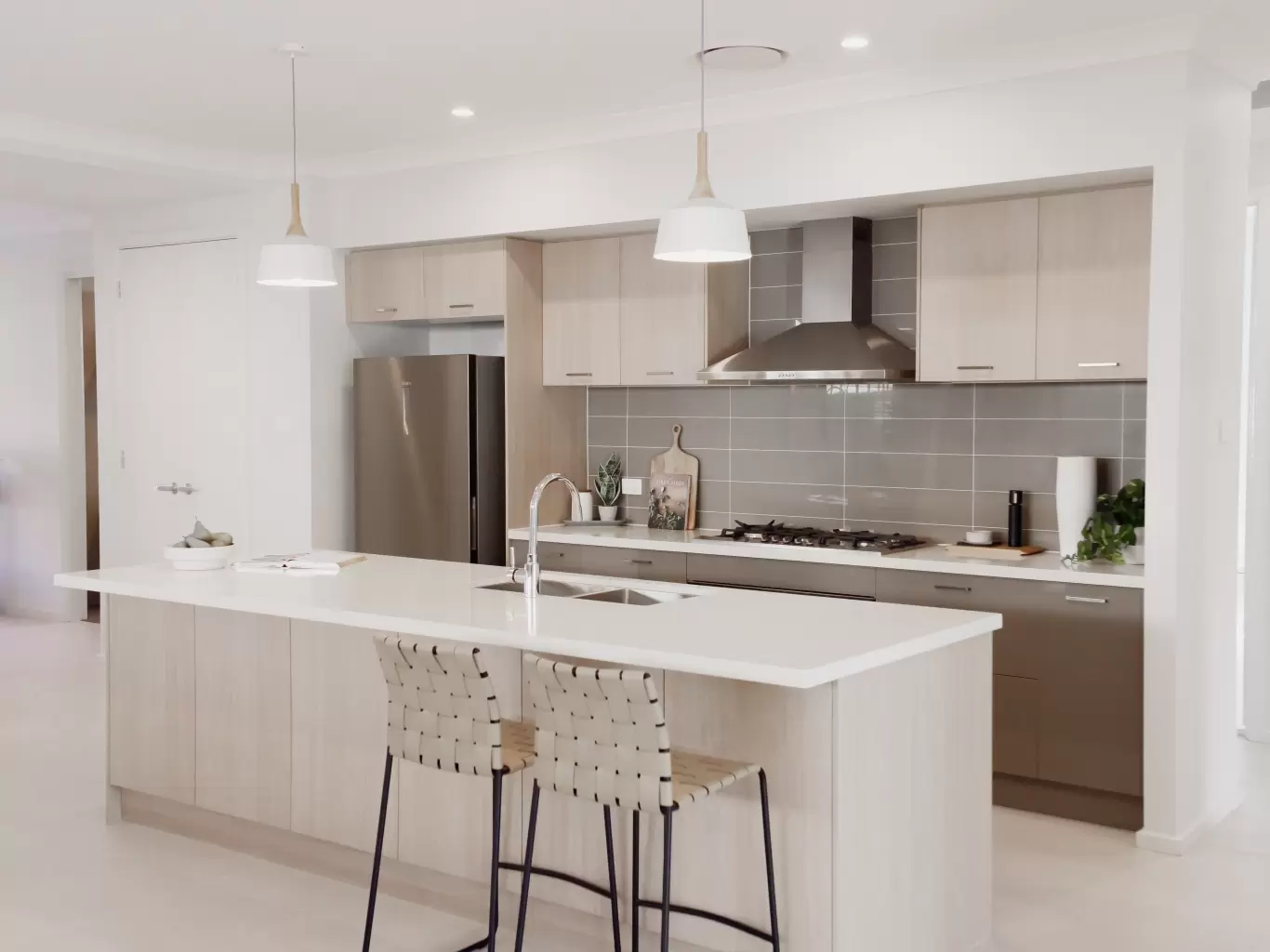How Much to Build a 4 Bedroom House in Australia
Let's dive into what you're looking at cost-wise to build a 4 bedroom house in Australia. In 2025, you're typically looking at between $350,000 and $750,000 on average, but this can vary significantly depending on your location, the materials you choose, and the finishes you implement. Sydney and Melbourne experience the highest costs, typically running 15-25% above the national average. It's important to realise this range doesn't include land purchase, which can potentially double your overall budget depending on where you're planning to build. Understanding these costs from the start helps you maximise your planning strategy and avoid those unwelcome budget surprises that can transform your building experience later on. We've designed this guide to give you the ultimate insights into what you're really facing when building your perfect 4 bedroom home.
How much does it cost to build a 4-bedroom house in Australia?
Building a 4-bedroom house in Australia typically costs between $300,000-$600,000, excluding land
Construction costs vary significantly based on location, with Sydney and Melbourne commanding premium prices
Quality of finishes and materials can shift costs by 20-40% within the same floor plan
Average Cost Range
The current construction market in Australia places the cost of building a standard 4-bedroom house between $300,000 and $600,000, not including land purchase. This range reflects significant variations across different states and territories. According to the Australian Bureau of Statistics' Building Activity data, New South Wales and Victoria consistently show higher construction costs than Queensland and Western Australia for equivalent homes.
Metropolitan areas command premium prices over regional locations. For example, building in Sydney costs approximately 15-25% more than equivalent construction in regional NSW towns like Orange or Bathurst. These price differences stem from higher labor costs in major cities, more stringent local building codes, and increased demand for construction services.
The Housing Industry Association (HIA) reports that the average 4-bedroom house in Australia spans 230-270 square meters. Using current construction rates of $1,500-$3,000 per square meter depending on quality, this translates to the broad range mentioned. Volume builders typically deliver at the lower end of this spectrum, while custom architectural designs push toward the upper limit and beyond.
Factors Influencing Construction Costs
Location and Regional Variations
Location remains the single most significant factor affecting construction costs. In 2025, building a 4-bedroom house in Sydney costs approximately 40% more than an identical house in Adelaide. The Price Cost Index published by Rawlinsons shows Sydney at 100 (baseline), Melbourne at 95, Brisbane at 85, Perth at 80, and Adelaide at 75, representing relative construction costs across major cities.
Regional differences extend beyond state borders to local council regulations. Each municipality enforces specific building codes and requirements that can add $5,000-$20,000 to construction costs through additional engineering, materials specifications, or energy efficiency requirements.
Quality and Design Specifications
The finishes and fixtures you select create substantial variance in construction costs. Basic construction with standard finishes sits at the lower end of the price spectrum ($1,500-$1,800 per square meter), while mid-range quality pushes this to $2,000-$2,500, and luxury specifications can exceed $3,000 per square meter.
Specific design elements that significantly impact costs include:
Kitchen specifications: Basic kitchens start around $15,000, while high-end designs with stone countertops and European appliances can exceed $50,000
Bathroom quality: Each bathroom adds $15,000-$35,000 depending on fixtures and finishes
Ceiling heights: Raising ceiling heights from standard 2.4m to 2.7m adds 5-7% to construction costs
Window quality: Double glazing adds $7,000-$15,000 to a typical 4-bedroom house but improves energy efficiency
Custom architectural designs typically cost 15-25% more than volume builder plans due to unique engineering requirements, non-standard materials, and specialised labor needs.
Breakdown by States and Territories
Construction costs vary meaningfully across Australian states and territories, influenced by local economic conditions, available materials, and labor markets.
New South Wales and Victoria
In NSW and Victoria, particularly in Sydney and Melbourne, building costs for 4-bedroom houses typically range from $350,000 to $600,000. The CoreLogic Construction Cost Index shows these states experiencing above-average inflation in building costs, with 7.3% annual growth compared to the national average of 6.1%.
Sydney's Northern Beaches and Eastern Suburbs represent the most expensive construction regions in Australia, where identical homes cost 15-20% more than even other parts of the same city. This stems from difficult site access, premium labor costs, and stricter council requirements. In contrast, South West Sydney is emerging as a popular and more affordable region for new constructions.
Queensland and Western Australia
Queensland offers more affordable construction, with 4-bedroom houses typically costing $320,000-$480,000. The Queensland Building and Construction Commission data indicates that Southeast Queensland commands higher prices than regional areas like Townsville or Cairns.
Western Australia shows similar patterns, with Perth construction averaging $330,000-$490,000 for a 4-bedroom house. The mining regions occasionally experience cost spikes during resource booms due to labor shortages.
South Australia, Tasmania, and Territories
South Australia offers some of the most affordable construction in the country, with 4-bedroom homes typically ranging from $280,000-$420,000. Tasmania follows a similar pattern with costs of $290,000-$430,000, though its island status occasionally causes materials supply issues.
The Northern Territory faces unique challenges with higher transportation costs for materials and limited contractor availability, pushing construction costs to $350,000-$550,000 despite lower land prices. The ACT, influenced by public service salaries and strict building codes, sits in the mid-range at $330,000-$500,000.
Cost Per Square Meter Analysis
Understanding construction costs per square meter provides a clearer picture of where your money goes when building a 4-bedroom house.
Standard Measurements
Australia's construction industry typically measures costs in square meters of total floor area. According to the Australian Institute of Quantity Surveyors, current rates for residential construction fall into these categories:
Basic quality: $1,500-$1,800 per square meter
Medium quality: $1,900-$2,500 per square meter
High quality: $2,600-$3,500 per square meter
Luxury custom homes: $3,500+ per square meter
A typical 4-bedroom house spans 230-270 square meters, placing standard construction costs between $345,000 and $675,000 depending on quality level. This measurement includes all internal living spaces but excludes outdoor areas like patios or verandas, which add $300-$600 per square meter.
Comparing Value for Money
The cost per square meter varies significantly based on design efficiency. Open-plan layouts generally cost less per square meter than homes with numerous internal walls, while two-story designs save on foundation and roofing costs despite more expensive construction techniques.
Complex roof designs add considerable expense, with basic gabled roofs costing around $80-$100 per square meter of roof area, while more complex designs with multiple pitches can double this figure. Similarly, unusual floor plans with multiple corners or curved walls add 10-15% to construction costs compared to simple rectangular designs.
Market Conditions and Timing Considerations
The construction industry experiences significant cyclical variations that affect building costs.
Supply Chain Impacts
Since the global supply chain disruptions of 2020-2022, material costs have remained volatile. Timber prices fluctuate 15-25% annually, while steel and concrete show more stability but still experience 5-10% annual price shifts. According to the Australian Construction Industry Forum, materials represent 40-45% of total construction costs for a typical home.
The current timber shortage continues to affect framing costs in particular. Builder associations recommend ordering materials well in advance and considering alternative construction methods like steel framing in some cases.
Builder Availability and Timing
Construction demand cycles significantly impact pricing. During high-demand periods, builders add 5-15% premium charges due to their full schedules. Conversely, during slower periods, particularly mid-winter in southern states, builders may offer discounts of 5-10% to maintain workflow.
Construction timing also affects costs through weather considerations. Building during optimal weather conditions reduces delays and additional expenses. For example, commencing earthworks and foundations during dry seasons can save $5,000-$15,000 in potential remediation costs compared to wet season starts.
The current backlog in residential construction means most builders are booking projects 6-12 months in advance. Planning for this timeline allows you to secure more competitive pricing and avoid rush charges.
Is $500,000 enough to build a 4 bedroom house?
$500,000 can build a 4-bedroom house in most Australian regions, but requires strategic planning
Budget limitations will necessitate trade-offs between size, quality, and features
Location remains the ultimate cost factor, with urban areas demanding higher budgets
Whether $500,000 is enough to build a 4-bedroom house in Australia depends on several key factors. This budget falls within the typical range for building a family home, but its adequacy varies dramatically based on location, design choices, and current market conditions.
Budget Allocation
Planning how to distribute your $500,000 budget is crucial to cover all necessary expenses. For most 4-bedroom homes, construction costs represent the largest portion, typically accounting for 60-70% of your total budget. The remaining 30-40% needs to cover site preparation, professional fees, permits, and contingencies.
A standard breakdown often looks like this:
Construction (materials and labor): $300,000-$350,000
Site preparation: $20,000-$40,000
Professional fees (architects, engineers): $25,000-$40,000
Permits and approvals: $10,000-$20,000
Contingency fund: $50,000-$75,000
This breakdown doesn't include land costs, which vary dramatically based on location. In regional areas, $500,000 might cover both land and construction, while in metropolitan areas, this budget would likely only cover the construction phase.
"The average cost to build a 4 bedroom house can range between $300,000 and $500,000. The cost of land is not included in this range. Because a lot of factors affect the final price, it's important to plan ahead and get multiple quotes from different developers," according to industry estimates.
Setting aside 10-15% of your budget for unexpected expenses is absolutely essential. Construction projects frequently encounter surprises like hidden site conditions, material price increases, or design modifications that transform your initial estimates. Without this buffer, you risk being unable to complete your dream home as planned.
Working with Builders and Cost Estimates
Consulting with professional builders early in your planning process is crucial for success. Experienced builders can provide insights into current material and labor costs specific to your region. They can also identify potential cost savings without compromising quality.
When requesting quotes, provide detailed information about your expectations, including floor plans, site conditions, and finish levels. This helps ensure you receive accurate estimates rather than ballpark figures that might increase significantly later.
Fixed-price contracts offer more budget certainty than cost-plus arrangements, especially for those with strict financial limitations. However, they may include builder margins to cover possible cost increases. Discussing these contract options transparently with potential builders helps unlock budget certainty and avoid surprises midway through construction.
Balancing Design and Cost
Building a 4-bedroom house for $500,000 typically requires making thoughtful trade-offs between size, quality, and features. The most significant decisions affecting your budget involve house size, layout complexity, and finish quality.
A simpler, more compact design will always cost less than sprawling layouts with complex roof lines and numerous corners. Each additional square meter adds approximately $1,500-$3,000 to your construction costs, depending on quality level. Most 4-bedroom homes require at least 200-250 square meters to comfortably accommodate family needs.
Standard fixtures and finishes can save substantial amounts compared to premium alternatives:
Standard kitchen ($15,000-$25,000) vs. luxury kitchen ($40,000-$80,000)
Basic bathroom fixtures ($5,000-$10,000) vs. high-end fixtures ($15,000-$30,000 per bathroom)
Standard flooring ($50-$100/m²) vs. premium options ($150-$300/m²)
"Choose an easy design: Avoid complex layouts or custom designs to keep construction costs down. Pick affordable materials: Use quality but budget-friendly materials such as flooring, windows, and countertops. Limit upgrades: Stick to standard furniture and finishes instead of high-priced upgrades."
Many homeowners discover that focusing luxury elements in high-impact areas while using standard finishes elsewhere creates an unforgettable result. For instance, investing in a striking kitchen while using simpler finishes in bathrooms and bedrooms often delivers the ultimate value for limited budgets.
Space Efficiency and Value Engineering
The strategy of value engineering—optimizing function while minimizing unnecessary costs—becomes essential when working with budget constraints. This approach focuses on eliminating wasteful design elements while preserving the home's functionality and comfort.
For a $500,000 budget, efficient space planning is critical. This might include:
Multi-purpose rooms that serve dual functions
Open-plan living areas that reduce hallways and circulation space
Standardised room dimensions that minimise waste in materials like flooring
Strategic window placement for natural light, reducing the need for additional lighting
Phasing construction or planning for future additions allows for spreading costs over time. For example, including plumbing rough-ins for a future bathroom or designing a floor plan that accommodates a later extension can provide flexibility without requiring immediate expenditure.
"By selecting easy designs, and affordable materials, and getting multiple rates from developers, you may save money. By making a budget in advance, you can get the home of your wishes while staying within your budget."
The question "How big of a house can you build for $500,000?" varies by location, but in many Australian regions outside major cities, this budget can transform into a comfortable 4-bedroom home of approximately 180-220 square meters with standard finishes. In metropolitan areas, the same budget might only cover 150-180 square meters or require more basic finishing.
With careful planning and realistic expectations, $500,000 can be sufficient to build a functional and attractive 4-bedroom home in many parts of Australia, particularly in regional areas and outer suburbs. However, in premium locations and inner-city areas, this budget may require significant compromises on size or quality to realise your perfect family home.
Supplementary Information and Frequently Asked Questions
Transforming your dream home into reality requires navigating the building journey efficiently
Understanding the perfect balance between building versus buying helps unlock better financial decisions
Mastering construction terminology ensures a seamless communication experience throughout your project
Common Challenges During Construction
You know that feeling when you've planned everything perfectly, but things still don't go exactly to plan? That's the reality of home building. Construction projects in Australia face several common hurdles that can test even the most patient homeowner. The most frequent challenges we've encountered include timeline delays, budget overruns, and quality control issues.
Weather remains one of the most unpredictable factors affecting construction in Australia. Heavy rain can halt work for days or weeks, especially during foundation stages. Design modifications during construction also trigger significant delays and cost increases. Many homeowners don't realise that each change, no matter how small, requires adjustments to schedules, labor allocation, and materials.
Supply chain disruptions have become increasingly common since 2020. Materials that once took days to arrive now might take weeks or months. This creates a domino effect, where one delay causes several others down the line. Labor shortages in specialised trades also create bottlenecks in the construction process, particularly for detailed work like electrical installations or custom joinery.
Strategies for Navigating Construction Challenges
Let's transform your building experience with some expert insights. Setting a realistic contingency budget of 10-15% above the contract price helps absorb unexpected costs. This buffer should be absolutely non-negotiable in your financial planning, as virtually all construction projects encounter unforgettable surprises along the way.
Clear communication channels with your builder prevent many problems. Regular scheduled meetings (weekly or bi-weekly) help maximise awareness about progress and potential issues. Document all communication in writing, even after phone calls or in-person discussions. This creates a paper trail that helps resolve disputes if they arise later.
A detailed contract provides protection for both parties. Before signing, ensure it includes specific timelines, payment schedules, and quality standards. The contract should also outline the process for handling disputes and implementing changes. The Housing Industry Association suggests having a lawyer review your contract before signing to identify potential issues.
Cost Comparison: Building vs. Buying
The ultimate decision between building a new home or purchasing an existing one often comes down to financial considerations, personal preferences, and long-term goals. Both options have distinct advantages that impact the final cost and value.
Building a new home typically requires more upfront investment than buying an existing property in the same area. According to housing data, the median price for an existing four-bedroom house in metropolitan areas is often 10-15% lower than building the same size home. However, this initial cost difference doesn't tell the complete story. New homes require minimal maintenance in the first years, while existing homes often need immediate updates that can quickly eliminate those initial savings.
Building allows you to design the perfect home that matches your lifestyle. Every feature from room dimensions to fixtures can be crafted to your specific requirements. This customization adds significant value that's difficult to measure in dollars alone. New homes also incorporate the latest building standards, energy efficiency features, and technology, potentially reducing long-term ownership costs through lower utility bills.
Regional Cost Variations
The cost difference between building and buying varies dramatically across Australia. In Sydney and Melbourne, building often proves more expensive than buying due to limited land availability and high construction costs. The gap can be 20-30% in premium suburbs. Conversely, in growing regions like Southeast Queensland, building can be more cost-effective, with savings of 5-10% compared to buying existing homes.
Regional areas typically offer more affordable land, making building more attractive financially. However, these areas may have higher construction costs due to transportation of materials and limited access to trades. Remote areas face additional challenges with longer build times and difficulty securing contractors, which can increase costs by 15-20% compared to urban construction.
The timing of your decision also matters. During real estate booms, existing home prices often rise faster than construction costs, making building more attractive. During market downturns, existing home prices may fall below replacement cost, making buying more economical. Let's dive into current market conditions in your target location before making this significant financial decision.
Terminology Explained: Key Construction Terms
The building industry utilises specific terminology that can be overwhelming for first-time homebuilders. Mastering these terms helps you navigate the construction process and implement informed decisions about your project.
A 'turnkey' package means everything is included and the home is ready to move into upon completion. These packages typically include fixtures, finishes, driveways, landscaping, and sometimes even window treatments. While convenient, turnkey packages may limit customization options and charge premium prices for upgrades. Always check what's included to avoid surprises.
'Off-the-plan' purchases refer to buying a home before it's built, based on plans and specifications. These arrangements often allow some customization while construction is ongoing. The price is typically fixed at the time of contract, protecting you from market increases during the build. However, the final product may differ slightly from what you expected based on plans alone.
A 'fixed-price contract' guarantees the builder will complete the work for the agreed price, regardless of cost increases. This provides budget certainty but may include conditions allowing price adjustments under specific circumstances. Check for allowances and provisional sums in the contract, which indicate estimated rather than fixed costs for certain items.
Builder Warranties and Guarantees
Australian law requires builders to provide statutory warranties that protect homeowners against defects. These warranties vary by state but typically cover structural defects for 6-7 years and non-structural issues for 2 years. These protections remain in place regardless of what your contract states.
Home warranty insurance (sometimes called builders warranty insurance) provides additional protection if your builder goes bankrupt, disappears, or dies. This insurance allows you to claim for incomplete or defective work. Requirements vary by state, with some states making it mandatory for projects over certain values.
Practical completion certificates indicate when the builder considers the home complete and ready for occupation. This important document triggers several timeframes, including the start of warranty periods and the release of final payments. Before signing this certificate, conduct a thorough inspection and create a list of any incomplete or unsatisfactory work to be addressed.
FAQs About Building in Australia
Here's what you're probably wondering about the building process. We've covered the most common questions our clients ask about transforming their dream homes into reality.
How long does it take to build a four-bedroom house in Australia? The average construction time ranges from 8-12 months, not including planning and approvals. Factors affecting this timeline include weather conditions, site complexity, builder capacity, and design intricacy. Custom homes typically take longer than standard designs. Add 3-6 months for the planning, design, and approval stages before construction begins.
What financing options are available for new home construction? Construction loans differ from standard mortgages. They release funds in stages as building progresses, with interest-only payments during construction. Once complete, the loan typically converts to a standard mortgage. Lenders require detailed plans, specifications, and contracts before approval. First-time builders should consult with mortgage brokers who specialise in construction loans to maximise their approval chances.
How much customization is possible with volume builders versus custom builders? Volume builders offer limited customization within their standard plans, typically charging premium rates for changes. Custom builders provide greater flexibility but at higher prices. Many homeowners find a middle ground with semi-custom builders, who modify existing designs to suit specific needs while maintaining some cost efficiencies.
What are the most common regrets of homebuilders? Survey data shows that insufficient storage, poor space planning, and inadequate electrical outlets top the list. Other frequent regrets include choosing trends over timeless design and underestimating the importance of orientation for natural light. Taking time with the planning phase and possibly consulting with an independent designer can help unlock the perfect design strategy for your new home.
Conclusion
Building a 4-bedroom house in Australia is a significant financial commitment, with costs typically ranging from $300,000 to $600,000 depending on location, design choices, and material selections. While $500,000 can be enough for a quality home, perfect planning and budgeting are absolutely essential to maximise efficiency and avoid unexpected expenses. From land costs and site preparation to building permits and sustainable features, every decision transforms your final investment.
Remember that cost isn't the only consideration—design trends, building regulations, and ultimate value should all factor into your strategy. Whether you're planning to implement modern features, unlock sustainable building practices, or utilise traditional designs, understanding the complete cost breakdown helps you make expert-informed choices.
Before breaking ground on your new home, let's organise your approach—consult multiple builders for detailed quotes, research local regulations, and establish a realistic buffer for contingencies. The journey of building a 4-bedroom house requires patience and flexibility, but the reward is crafting an unforgettable space perfectly tailored to your family's needs.
With proper planning and professional insights, your dream home in Australia is within reach—a space where you'll discover and create memories for years to come.
